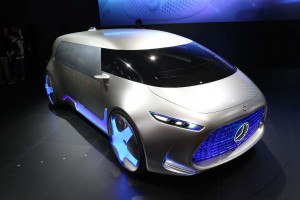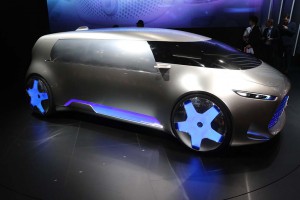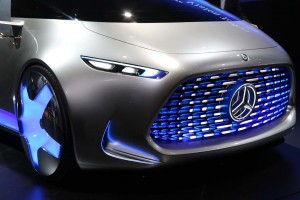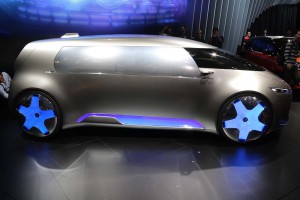
The Mercedes' Vision Tokyo is a five-seat concept vehicle that it describes as a “connected lounge.”
Technology isn’t the only thing reshaping the automobile. One only has to get stuck in Tokyo traffic to see the challenges posed by modern megacities.
Mercedes-Benz has been searching for ways to reshape tomorrow’s luxury cars with high-tech concepts like the F 015 that debuted at the Detroit Auto Show last January. Now, it’s pulling the wraps off the Vision Tokyo, a five-seat concept vehicle that it describes as a “connected lounge.”
Capable of driving autonomously, and fitted with the latest in infotainment and other technologies, the Mercedes-Benz Vision Tokyo seems a potentially appropriate solution for a tech-crazy city that is barely as big as Paris but serves as home to four times as many people.
“The Mercedes-Benz Vision Tokyo embodies the concept of an automotive lounge for a future generation of megacities,” suggests Gorden Wagener, head of Design for Daimler AG. “The purity and sensuality of the Vision Tokyo’s styling defines a new interpretation of modern luxury from Mercedes-Benz.”

Capable of driving autonomously, and fitted with the latest in infotainment and other technologies: the Mercedes-Benz Vision Tokyo.
The design of the Vision Tokyo is more people-mover – make that van, if you prefer – than other recent Mercedes concepts, such as the F 015. The goal is clearly to provide maximum cabin space that, when operated in autonomous mode, allows all occupants to swivel their seats and face one another.
(Mercedes teases concept van for Tokyo. For more, Click Here.)
The goal, the maker suggests, is to create “a hip living space – a chill-out zone in the midst of megacity traffic mayhem.”
From a technological standpoint, the Vision Tokyo has clearly been crafted to appeal to the post-Millennial Generation Z, those who have grown up playing with iPads, as well as Lego blocks, and who couldn’t imagine a world where everything isn’t part of the connected world.
Slipping inside, passengers will notice the Vision Tokyo has abandoned the conventional front and rear seat layout. Instead, the show car is outfitted with a large, oval-shaped couch. The design is meant to encourage a “chill-and-chat” environment.
But there are plenty of opportunities to connect with the outside world. There are wraparound video screens behind the passengers, and the vision for the Vision Tokyo includes holographic displays of apps, maps and entertainment videos.
(Click Here for details about the three vehicles Toyota is showing in Tokyo.)
Among the other cutting-edge technologies, the Vision Tokyo features what Mercedes describes as “Deep Machine Learning and an intelligent Predictive Engine mean that, with each journey, it becomes more and more familiar with its occupants, their likes and preferences.

Vision Tokyo taps into a hydrogen fuel-cell system based on the technology first shown with the maker’s F 015 concept earlier this year.
Incidentally, Should there be a need to manually take control of the Vision Tokyo, a forward-facing seat pulls out of the couch and slides forward, whoever is charged with driving taking hold of a steering wheel and pedals that pop out of a standby position.
For power, the Mercedes-Benz Vision Tokyo taps into a hydrogen fuel-cell system based on the technology first shown with the maker’s F 015 concept earlier this year. It also has a plug-based battery backup system that can be charged through a wireless induction system.
(To see more about the top 12 debuts at the Tokyo Motor Show, Click Here.)
The system on the Mercedes-Benz Vision Tokyo uses carbon fiber hydrogen tanks to maximize their capacity – and safety in a crash. They could provide nearly 500 miles range, with the battery system kicking in another 120 miles of emissions-free driving.

